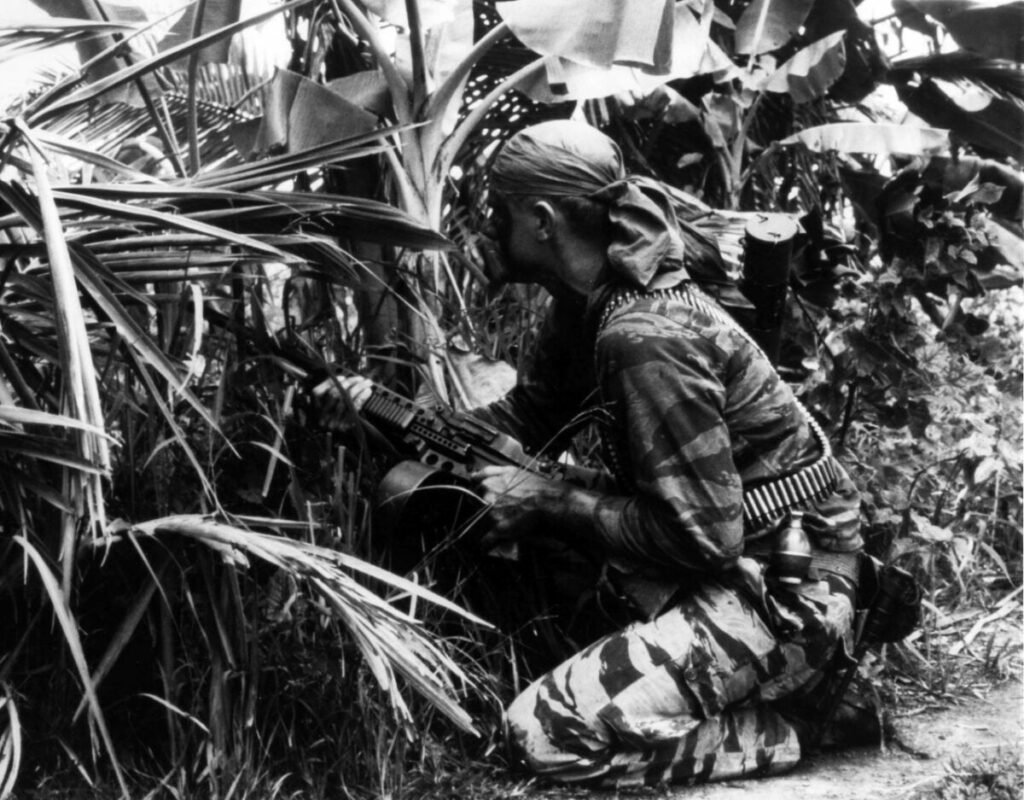VERY DETAILED! 1968 Vietnam War "CAMOUFLAGE" - Individual, Artillery, Vehicles, Aircraft, Command Post, & Supply Points Camouflage- - HEADQUARTER DEPARTMENT OF THE ARMY Manual



















































VERY DETAILED! 1968 Vietnam War "CAMOUFLAGE" - Individual, Artillery, Vehicles, Aircraft, Command Post, & Supply Points Camouflage- - HEADQUARTER DEPARTMENT OF THE ARMY Manual
Comes with a hand-signed C.O.A.
This original and museum-grade Vietnam War artifact is one of the most extensively produced informational field manuals regarding “CAMOUFLAGE”.
Dated May 1968 this manual was specially produced by the HEADQUARTER DEPARTMENT OF THE ARMY - WASHINGTON D.C. 1968. What makes this so rare is that this manual supersedes the last U.S. Army manual that was produced in 1959. This manual was specially made to contain the most updated information and the latest technique of camouflage to be used in the Vietnam War.
This CAMOUFLAGE manual extensively details: Dedection, Concealment, Individual Soldier Camouflage, Camouflage for Artillery & Vehicles, Aircraft Camouflage, Command Post and Supply Post Camouflage, and Decoy Installations (Ghost Army).
The Vietnam War, spanning from 1955 to 1975, was a complex and unconventional conflict that presented unique challenges to military forces on both sides. One crucial element that played a significant role in the strategies employed by the U.S. and Vietnamese forces was camouflage. Camouflage was not only a means of concealing troops and equipment but also an essential aspect of survival and success in the dense jungles, swamps, and varied terrains of Vietnam.
Camouflage for Soldiers
Soldiers in Vietnam faced the daunting task of navigating dense jungles and unpredictable terrains, making them vulnerable to enemy ambushes. Camouflage became an indispensable tool for survival, with soldiers employing various techniques to blend into their surroundings. Uniforms were designed with patterns that mimicked the colors and textures of the jungle, featuring shades of green and brown to provide effective concealment. Additionally, soldiers often utilized natural materials, such as vegetation and mud, to further break up their outlines and remain hidden from enemy eyes.
Soldiers also painted their faces with earth-toned camouflage paint, reducing the chances of detection during stealth missions or ambushes. These techniques not only protected soldiers from visual detection but also contributed to their psychological well-being by instilling a sense of confidence in their ability to navigate and operate within the challenging environment.
Camouflage for Artillery
Artillery units faced the unique challenge of remaining concealed while delivering powerful and accurate firepower. In Vietnam, artillery pieces were often hidden in carefully camouflaged positions within the jungle or hillsides. Natural vegetation was used to create covers, and netting was employed to break up the outlines of artillery pieces, making them less visible from the air and ground.
To further enhance concealment, artillery units adopted mobile tactics, changing positions regularly to avoid detection by enemy forces. Camouflaged artillery played a crucial role in providing support to ground troops while minimizing the risk of counterattacks.
Camouflage for Vehicles
The mobility of vehicles in Vietnam was essential for both offensive and defensive operations. However, the distinctive appearance of military vehicles made them easy targets for enemy forces. To address this vulnerability, military vehicles were painted with camouflage patterns that matched the surrounding environment, blending into the dense foliage and rugged landscapes.
In addition to paint, vehicles were often adorned with natural materials such as branches and foliage, creating a more convincing illusion of natural surroundings. This adaptive camouflage allowed vehicles to move through hostile territory with reduced visibility, decreasing the likelihood of ambushes and attacks.
Camouflage for Aircraft
Aircraft played a critical role in the Vietnam War, providing reconnaissance, close air support, and transport for troops and supplies. To safeguard aircraft from ground-based threats, airframes were painted with camouflage patterns that mimicked the terrain below. Aircraft flying low over the jungles faced the challenge of visual detection by enemy forces, making effective camouflage imperative.
Helicopters, in particular, were vital for troop transport and medical evacuation, and they underwent extensive camouflage efforts. The distinctive "tiger stripe" patterns were applied to helicopter surfaces, creating a visual disruption that helped these aircraft blend into the surrounding environment, reducing the risk of enemy fire.
Camouflage for Command Posts
Command posts were crucial hubs for coordinating military operations, making them high-priority targets for the enemy. To protect these vital installations, military planners employed elaborate camouflage techniques to conceal command post locations. Natural vegetation, artificial covers, and netting were used to create an illusion of the environment, making it difficult for enemy reconnaissance to identify and target these critical positions.
Additionally, command posts were often dispersed and designed to be mobile, allowing for rapid relocation and reducing the risk of detection by enemy forces. The strategic use of camouflage not only protected command posts but also enhanced the overall effectiveness of military operations.
Camouflage for Supply Points
Maintaining a secure and uninterrupted supply chain was essential for the success of military operations in Vietnam. Supply points, where troops received equipment, ammunition, and provisions, were vulnerable to enemy attacks. Camouflaging supply points was critical to ensuring their security and the continuous flow of resources to frontline units.
Supply depots and staging areas were hidden within the landscape using natural materials and artificial covers. Concealing these logistical nodes helped prevent disruptions to the supply chain and maintained the operational readiness of military units.
In conclusion, camouflage played a pivotal role in the Vietnam War, influencing tactics and strategies across various military elements. From soldiers on the ground to aircraft in the sky, the effective use of camouflage was essential for survival and success in the dense and challenging terrain of Vietnam. The application of camouflage for soldiers, artillery, vehicles, aircraft, command posts, and supply points showcased the adaptability and innovation of military forces during this unconventional conflict. The lessons learned from the use of camouflage in Vietnam continue to resonate in military doctrines, emphasizing the importance of concealment and deception in modern warfare.